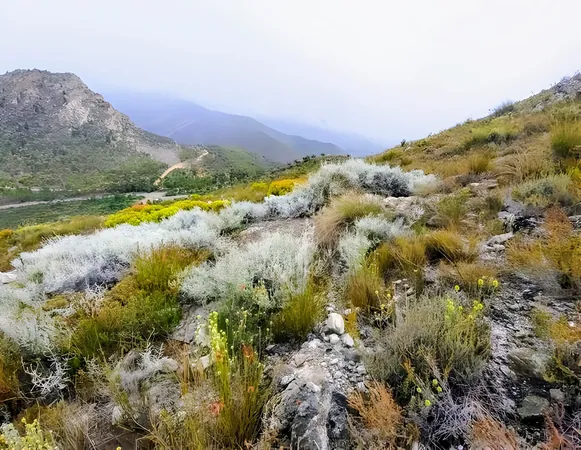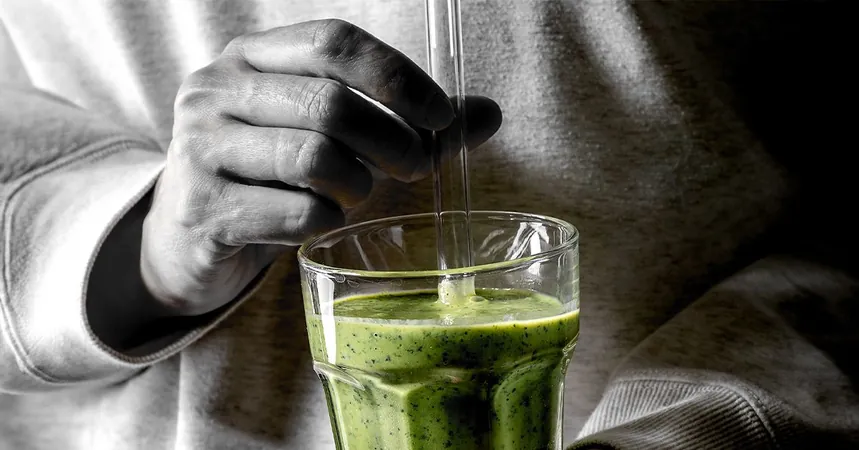
Revolutionary DNA Technology Set to Transform Plant Species Discovery!
2024-11-16
Author: John Tan
Globally, an astounding 8.7 million distinct plant species grace our planet, with nearly a quarter thriving in the ocean.
For centuries, our knowledge of these diverse species, especially terrestrial ones, has primarily revolved around their visible traits. This method of species identification, pioneered by the 18th-century scientist Carl Linnaeus, has long dominated the field. However, recent research suggests that this morphological approach may not fully capture the incredible complexity of plant diversity – and DNA holds the key.
Unlocking Plant Mystery with DNA Sequencing
The advent of advanced technology has opened the door to a new epoch in species identification – one powered by DNA sequencing. Over the past ten years, biologists have transformed their approach, leaning heavily on DNA analysis to discern species with pinpoint accuracy. Although traditional methods often rely on a single, species-specific DNA site, this can sometimes lead to inaccuracies.
According to Zaynab Shaik, a doctoral candidate at the University of Gothenburg, "There are instances when identical DNA sequences could belong to different species. But with the advancements in DNA sequencing, we can delve much deeper into the genome and uncover entirely new species."
The Case of the Cryptic Daisies
Shaik’s groundbreaking research focuses on a group of daisies native to the Cape Province of South Africa. This region is home to 66 recognized species, the first of which was documented back in 1753. Remarkably, some daisies in this area have left botanists scratching their heads. Dubbed “cryptic” species, these plants exhibit identical leaf and flower patterns, growth habits, and distributions, yet possess significant genetic diversity.
Shaik emphasizes the urgency of reassessing our understanding of plant relationships and biodiversity: "If we mistakenly identify a plant with medicinal uses and use a similar-looking but ineffective species instead, the consequences could be profound."
Groundbreaking Discoveries Await
Through her in-depth DNA analyses of these enigmatic daisies, Shaik has identified four new species. Interestingly, these aren't newly discovered plants hidden away in uncharted locations. "It's a bit of an anti-climax," she notes, explaining that these species have existed unnoticed amongst familiar ones for countless years.
Employing a technique known as integrative taxonomy - which combines traditional observational methods with cutting-edge DNA analysis - Shaik's work is expected to vastly increase the rate at which new plant species are discovered.
The Cape region may hold much more biodiversity than previously estimated, as Shaik suggests that only 1 percent of species remains undiscovered may be a gross underestimate. This idea may also extend to other global regions.
A Bright Future for Biodiversity Research
The synergy of DNA sequencing with classical taxonomy marks a revolutionary shift in our understanding of biodiversity. Integrative taxonomy not only accelerates species discovery but also bolsters conservation efforts by revealing genetic distinctions that aren't visible to the naked eye. The implications are far-reaching; understanding genetic differences better equips researchers to identify vulnerable populations, ultimately driving more effective conservation strategies.
As we delve deeper into the mysteries of genetics, we’re left wondering: How many more secrets of our planet's flora await revelation? As technology progresses alongside traditional methods, our exploration of Earth's astounding biodiversity is just beginning.
Stay tuned for more updates as we continue to uncover the wonders of our natural world!


 Brasil (PT)
Brasil (PT)
 Canada (EN)
Canada (EN)
 Chile (ES)
Chile (ES)
 España (ES)
España (ES)
 France (FR)
France (FR)
 Hong Kong (EN)
Hong Kong (EN)
 Italia (IT)
Italia (IT)
 日本 (JA)
日本 (JA)
 Magyarország (HU)
Magyarország (HU)
 Norge (NO)
Norge (NO)
 Polska (PL)
Polska (PL)
 Schweiz (DE)
Schweiz (DE)
 Singapore (EN)
Singapore (EN)
 Sverige (SV)
Sverige (SV)
 Suomi (FI)
Suomi (FI)
 Türkiye (TR)
Türkiye (TR)